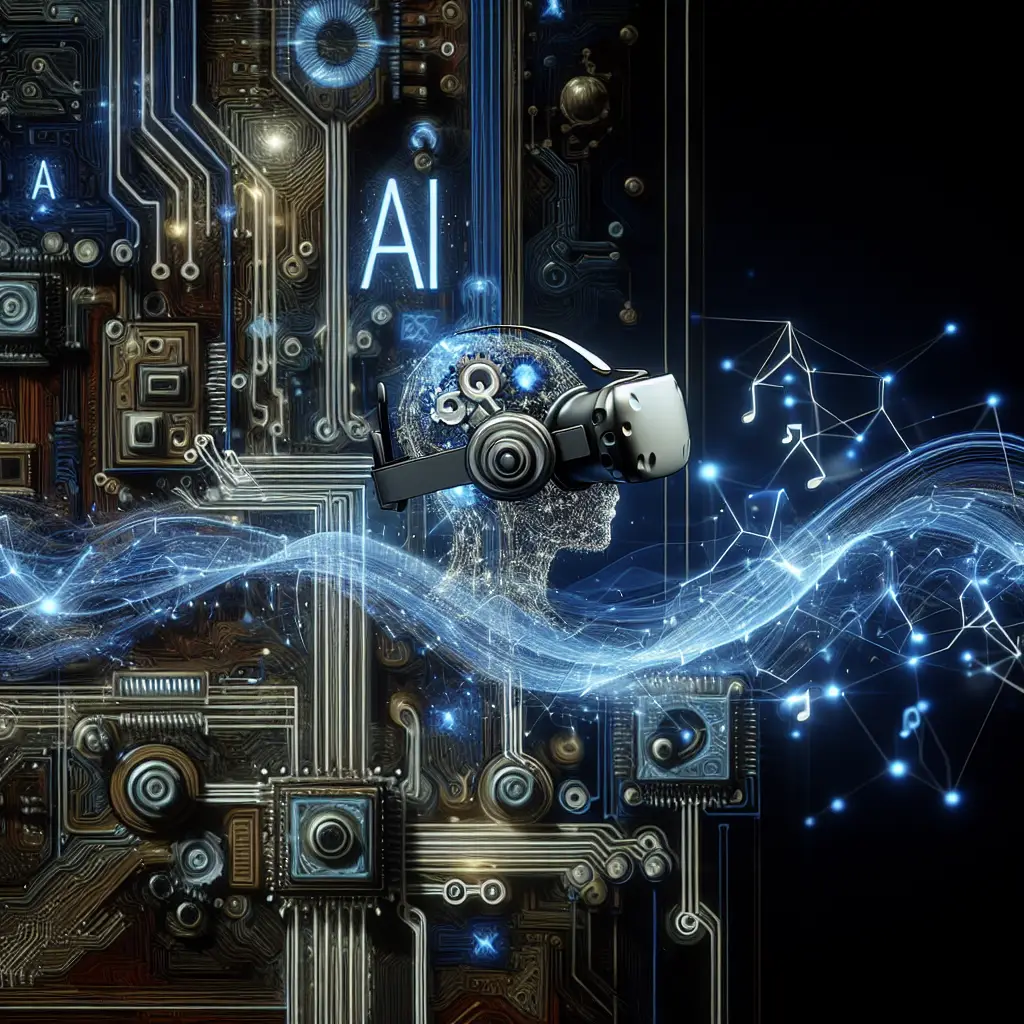Immersing ourselves in virtual worlds, interacting with virtual objects, and exploring completely unreal environments, all from the comfort of our living room, has been the promise of virtual reality (VR) for the past few decades. However, the quest to transform this science-fiction dream into a reality has been a long and challenging feat. Today, with the power of artificial intelligence (AI), the landscape of VR is shaping up into an intriguing reality with AI-driven innovations making strides across the spectrum.
The Magic of AI in Virtual Reality
AI has emerged as a revolutionizing technology that can mold virtual reality into a more immersive, interactive, and exciting dimension. The magic happens when virtual reality encounters artificial intelligence, unfolding in two significant ways: enhancing user interaction and creating dynamic virtual environments.
User Interaction in VR: Role of AI
Conventional VR systems offer a restricted degree of freedom, with the virtual environment responding in limited ways to user actions. AI is key to transcending beyond these limitations.
AI’s computer vision capability helps create VR systems that understand and react to a user’s physical attributes and movements more intuitively. AI can interpret the user’s gestures or facial expressions, allowing them to interface with the virtual world more naturally and seamlessly.
AI’s natural language processing (NLP) capacity also enables more engaging voice interactions with VR content and characters. For instance, users can have authentic conversations with virtual characters, which contribute to a richly interactive and immersive experience.
Creating Dynamic Virtual Environments
Stagnant and static scenes can be a drawback in a VR experience. AI transforms this by embedding intelligence into virtual environments, making them dynamic.
Procedural content generation, powered by AI, allows the creation of unpredictable, yet engaging environments. Combined with machine learning algorithms, it helps generate personalized VR content tailored to user preferences and responses. Imagine a VR game that adapts to your gaming style and evolves the gaming scenarios based upon your behavior – whether you are a cautious or aggressive player – offering an individualized and exciting gaming experience.
Deep learning algorithms allow for dynamic character behaviors, making characters more realistic and adaptable, able to learn from encounters with the user or other characters.
Exploring AI-Driven Innovations in VR
Now let’s delve into some exciting AI-driven innovations in VR that are transforming the way we experience virtual reality.
1. Haptic Feedback
Haptic feedback, also referred to as tactile feedback, is AI’s contribution to enhancing the touch and feel in VR. AI-powered haptic technology can mimic the sense of touch by applying forces, pressures, or vibrations to the user, making the VR experience significantly more realistic.
Companies like HaptX are breaking fresh ground in this area with gloves that let users feel virtual textures finely. Neosensory extended this concept to a wristband that converts audio from VR devices into vibrational feedback, adding another sensory dimension to the experience.
2. AI Gaming
AI has taken gaming experiences to a whole new level, involving the ability to limitlessly learn and adapt. AI can transform gaming environments, character behavior, and game responses based on player actions.
Prominent gaming studio Ubisoft has pioneered this domain, incorporating AI in their VR games. Their ‘Star Trek: Bridge Crew’ game uses IBM Watson’s AI services, allowing players to interact with the game using voice commands.
3. VR in Training and Education
AI-driven VR results in a more interactive learning environment, allowing for education and training that is closer to real-life scenarios. Medical and healthcare, military training, aviation, and even culinary arts are witnessing significant adoption.
Surgical Theater, an American company, uses VR combined with AI for surgical planning and medical education. Their VR system allows surgeons to rehearse complicated surgeries, making the process safer and teaching students more effectively.
Inference and Future Directions
Bringing AI and VR together is enabling more natural interaction and robust virtual environments. This fusion unleashes immense potential and paves the way for new applications and possibilities, shifting VR’s outlook from a tech-fantasy to a real-world utility tool.
While we’re just at the dawn of this exciting era, rapid technological advancements and substantial investment promise an interesting and evolving future for AI-based VR innovation. From gaming and entertainment to education and healthcare, AI-driven VR will continue to revolutionize numerous industry sectors and ultimately shift how humans interact with the digital world.
As AI improves, and VR attains higher levels of acceptance, the synergy of these technologies will redefine our notion of reality and virtual existence. We are indeed striding towards an exciting future where VR, powered by AI, has the potential to become an integral part of our daily lives.
Share this content:
